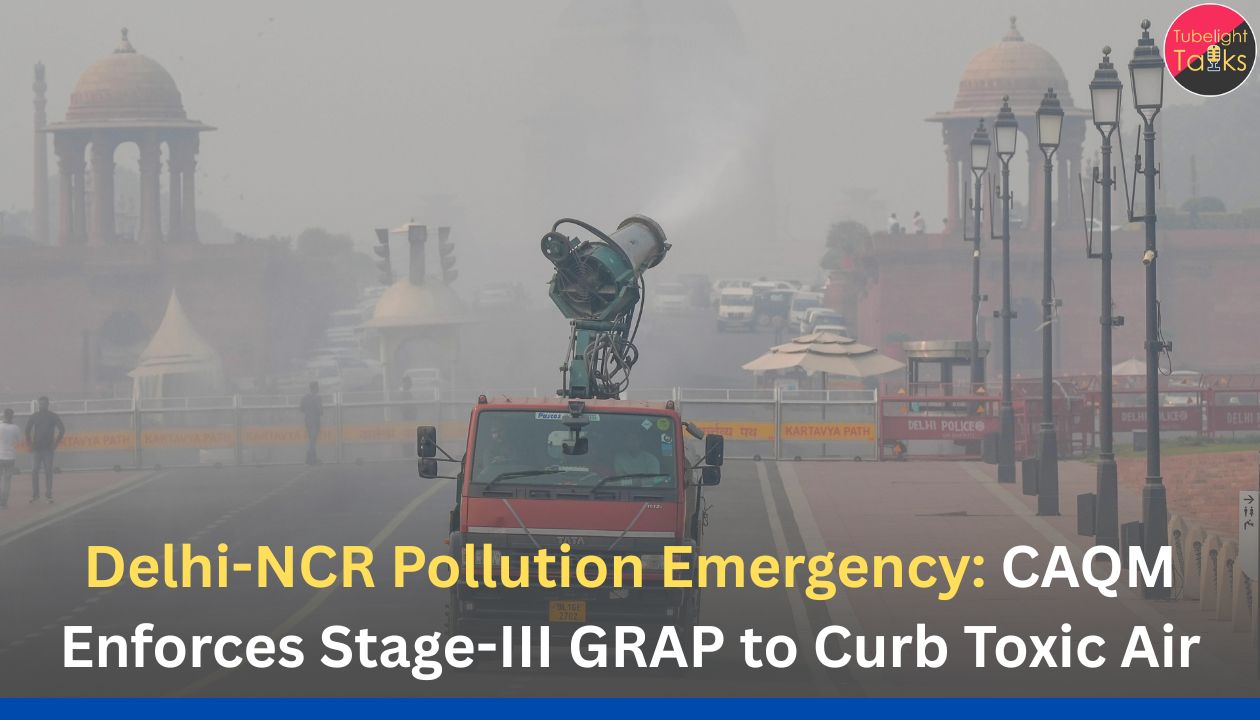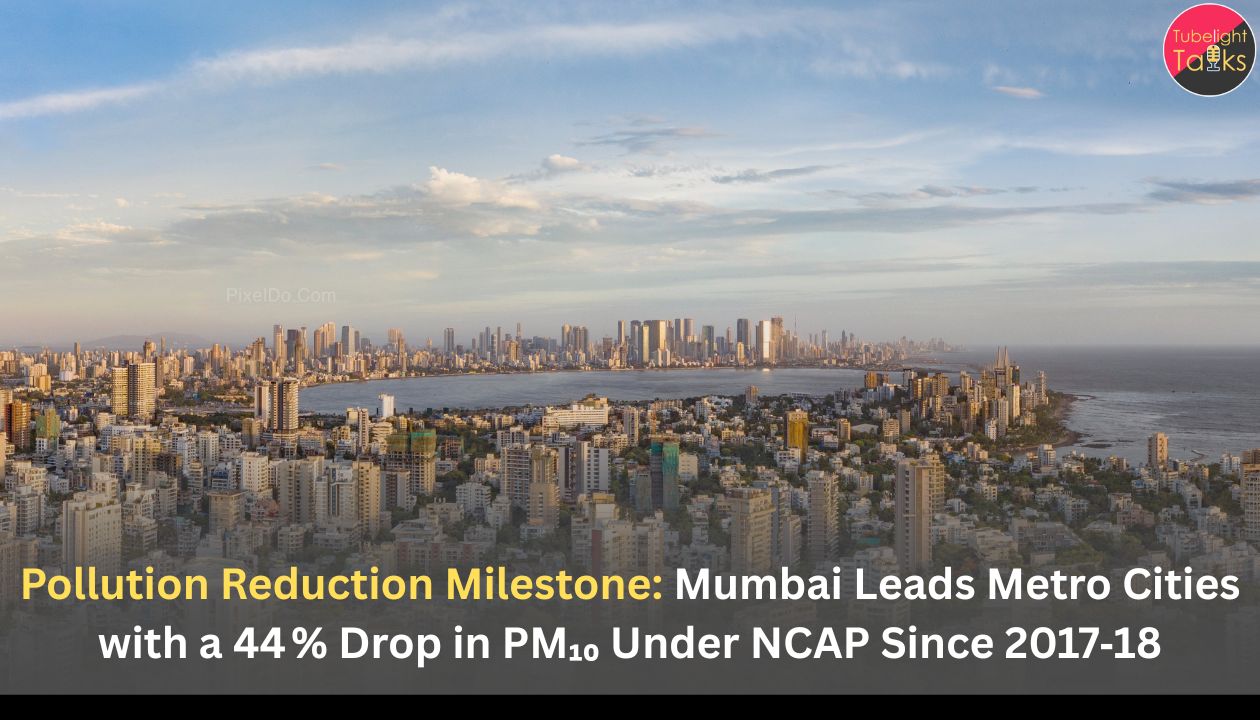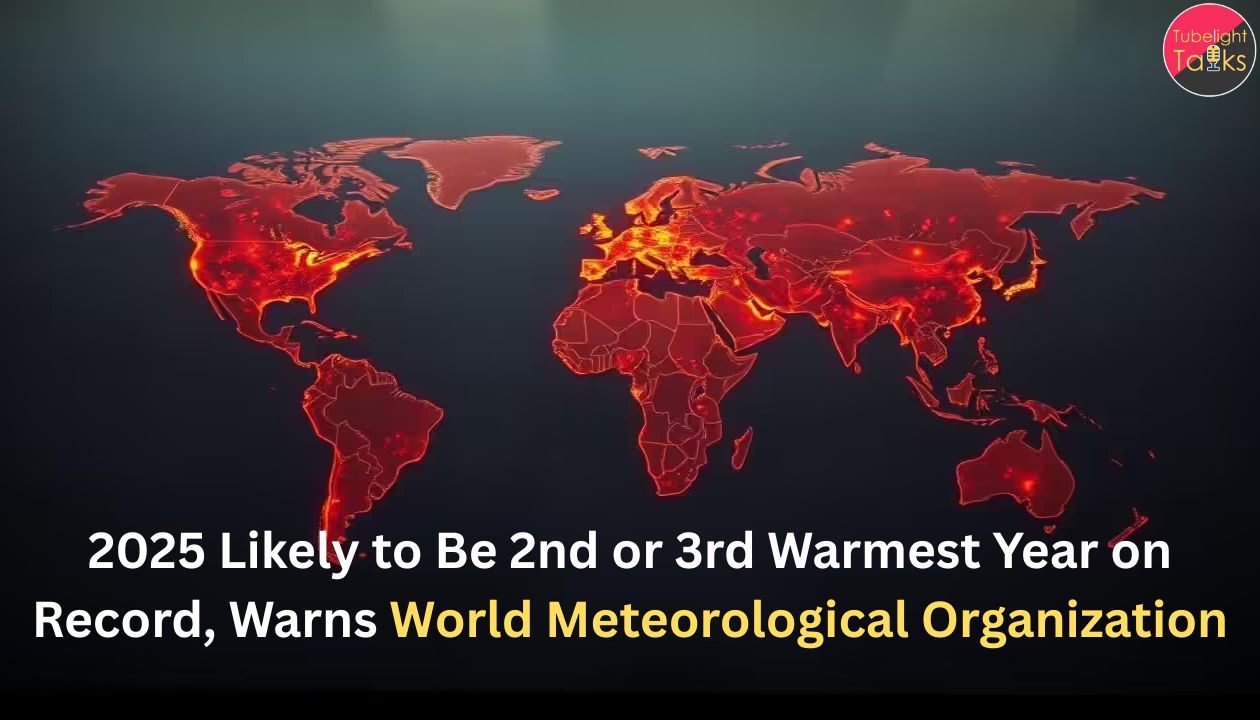Delhi-NCR’s November Smog: Delhi and the NCR have entered another smog stretch this November with the Air Quality Index (AQI) frequently in the “very poor” to “severe” bands. Official dashboards and bulletins from CPCB and the Air Quality Early Warning System show sustained stress, while the Commission for Air Quality Management (CAQM) continues to operate the Graded Response Action Plan (GRAP), which escalates curbs from Stage I to Stage IV based on pollution levels.
Public frustration boiled over into rare protests on November 10, 2025. This explainer brings together the latest orders, data, health guidance, and policy options—with authoritative links you can quote.
Where the AQI Stands (and how to read it)
Delhi’s AQI has oscillated between “very poor” (301–400) and “severe” (401–450; “severe+” above 450) across locations this month. CPCB’s daily AQI bulletin archives confirm day-wise values, and the Early Warning System noted an all-Delhi AQI of 361 (“very poor”) at 4 PM on Nov 8—in line with repeated spikes visible on city dashboards.
Independent reportage over Nov 9–10 described near-400 conditions and visibility dips, matching station-level observations. If you’re writing or making health decisions, cite the bulletin of the same day and the official AQI category definitions.
CPCB’s National AQI framework defines the categories and how sub-index values are computed for PM2.5, PM10, NO₂, SO₂, CO, O₃, NH₃ and Pb. Use the official legends when labeling charts.
Why November hurts every year
A “perfect storm” of post-monsoon stagnation, cooler nights, lower mixing heights, crop-residue smoke plumes, traffic, construction dust, and industrial emissions combine to trap pollutants in the boundary layer. Early Warning System notes also track temperature anomalies and wind, which can determine whether short-lived relief arrives.
The Law on the Field: What GRAP Says—Right Now
The latest official status
The CAQM site lists an order dated October 19, 2025 that implemented Stage II (Very Poor: AQI 301–400) actions in Delhi–NCR. That remains the formal baseline unless CAQM issues a fresh escalation order to Stage III (“Severe”) or Stage IV (“Severe+”). Reporters must always anchor to the last CAQM direction in force, even if news feeds speculate about higher stages.
GRAP at a glance (what each stage triggers)
- Stage I – Poor (AQI 201–300): Dust suppression, strict enforcement of PUC certificates, and curbs on diesel gensets in specified uses.
- Stage II – Very Poor (301–400): Intensified mechanical sweeping/watering, control on DG sets, parking fee hikes, enhanced C&D dust checks.
- Stage III – Severe (401–450): Ban on most construction & demolition (except critical projects), closure of stone crushers and mines, tighter traffic management.
- Stage IV – Severe+ (AQI > 450): Halt on entry of some truck categories, enhanced CNG/electric-only allowances, work-from-home advisories, and closures for certain non-essential activities—per CAQM’s Stage IV orders.
Pro tip for editors: Always link to the exact CAQM order PDF you reference (date + stage). The Winter Action 2024–25 page at CPCB also collates revocations/activations for quick backgrounders.
On the Ground This Week: What Happened
- Protests: On Nov 10, police detained demonstrators at India Gate during a rare anti-pollution protest as AQI remained in the “very poor” band citywide, highlighting public frustration. International wires and local coverage align on the arrests and the day’s AQI levels.
- City visuals: Multiple media clips reported visibility under a few hundred metres at times and “severe” pockets; some reports also noted GRAP III not yet enforced at that moment—underscoring the gap between category readings and formal orders. Cross-check with CAQM before publishing a “Stage III is on” line.
Odd–Even, Schools, Construction: What Might Change If Stage III/IV Is Triggered?
- Odd–Even: Delhi governments have periodically used an odd–even road rationing scheme during severe episodes. CSIR–CRRI’s past analysis observed 15–20% traffic volume reduction and 30–50% travel-time gains during earlier runs. Whether it returns depends on CAQM stage, Delhi govt orders, and courts. Treat future announcements as contingent, not automatic.
- Construction bans: A hallmark of Stage III is a broad C&D ban (with exemptions for critical projects). Editors should quote the specific order (date, list of exemptions).
- Schools: Education department decisions are separate from GRAP but often respond to Stage III/IV conditions; cite the relevant circular, not generic “closure” rumours.
- Freight/entry restrictions: Stage IV enables tighter controls on truck entry and fuels, with exemptions for essentials—again, quote the PDF.
How to Read & Cite AQI Without Confusion
- Cite the CPCB AQI bulletin for the day you’re writing about; avoid screenshots from generic apps.
- Use Early Warning System notes for forecast (1–3 day) and meteorology; it’s run by IMD & IITM.
- Include AQI category labels exactly as CPCB defines them (Poor, Very Poor, Severe, etc.).
- If you add station or neighbourhood readings, state the time and site; these can be higher than the city average. (Example: Anand Vihar often skews higher.)

Health: What Residents Should Actually Do This Week
Masks & exposure
- Use N95/N99 masks outdoors during “very poor/severe” hours; avoid cloth/surgical masks for PM2.5.
- Limit outdoor exercise at dawn/dusk when mixing heights are lowest.
- Close leaky windows; run HEPA purifiers in at least one room; prefer MERV-13 filters for HVAC where possible.
Indoor air basics
- Aim for indoor PM2.5 <35 µg/m³; run purifier on auto/turbo when outdoor AQI spikes.
- Avoid indoor sources: incense, smoking, frying without exhaust.
- In vehicles, set recirculation mode in heavy traffic.
For sensitive groups
- Children, elderly, pregnant people, and those with asthma/COPD/heart disease should plan errand windows in midday when dispersion is relatively better.
- Keep rescue inhalers and prescriptions up to date; consult a clinician if you experience worsening cough, wheeze, chest tightness, or palpitations.
What Authorities Can Do in the Next 7–14 Days (Rapid Measures)
- Escalate/relax GRAP strictly by CAQM thresholds and forecast—announce start–stop times clearly to cut compliance ambiguity.
- Aggressive dust control at hotspots (Anand Vihar/major corridors), 24×7 mechanical sweeping + water-spraying under Stage II/III.
- Roster-based inspections for C&D/ready-mix plants; GPS logs + fines for violators.
- Target diesel gensets with temporary supply support where feasible to avoid healthcare/essential disruptions.
- Public comms: Push mask advisories, hospital triage information, and AQI literacy posts everywhere (Metro screens, RWAs, schools).
The Policy Lens: Beyond “Smog Season”
- Vehicle emissions: Fleet turnover, end-of-life vehicle scrappage (ongoing CAQM directives), periodic PUC audits, and urban freight time-windows matter far more than 1–week emergency schemes.
- Industry & fuels: Stricter stack norms, enforcement of cleaner fuels for gensets/boilers.
- Dust governance: Covering materials, paved shoulders, and on-site sprinklers can shave PM10/PM2.5 meaningfully in winter.
- Regional coordination: Managing residue burning needs procurement alternatives, balers/bioenergy, and state-level coordination—vital but outside GRAP’s municipal levers.
What Residents Can Do – A Practical 7-Day Plan
Day 1–2: Measure & seal
- Get a basic PM2.5 monitor or use a reliable app tied to CPCB stations; identify your home’s “cleanest” room and seal leaks (foam strips, door sweeps).
Day 3–4: Purify & plan
- Add a HEPA purifier in the sleeping area; keep spare filters.
- Shift workouts indoors or to midday when dispersion improves; if running outdoors, mask up.
Day 5–7: Routine & resilience
- Keep a mask by the door; split chores across low-AQI windows.
- For kids/elderly, school drop or clinic visits after 10 AM when possible.
- In offices, ask facilities to upgrade filtration or run recirculation during peak hours.
Clean Air, Clean Conduct
Smog makes us think of machines and measures, but the day-to-day choice still sits with people. Choosing not to cut corners on construction dust covers, vehicle maintenance, or honest emissions reporting is a moral decision as much as a policy one.
Guidance that emphasizes truthful work, non-exploitation, and responsibility reminds us that civic health depends on everyday fair dealing—from contractors who cover debris to drivers who keep their cars tuned. When we put honesty and care at the centre, compliance stops being a tick-box and becomes a habit that protects our neighbours’ lungs.
Act on the Data You Can Trust
For residents
- Bookmark CPCB’s AQI bulletin and the Early Warning portal; check the category before stepping out.
- Mask smart (N95/N99), plan midday errands, keep at least one purifier room ready.
For RWAs & offices
- Audit common areas for dust leaks, install door sweeps, and run MERV-13/HEPA wherever feasible.
- Share daily AQI and mask reminders on building groups; offer indoor play options for kids on “severe” days.
For reporters & creators
- Quote the latest CAQM order (date + stage) and the same-day CPCB bulletin; avoid conflating “severe pockets” with official Stage III/IV unless a new order is out.
Read Also: Delhi Enter in Red Zone as Air Quality Index Surges Beyond Safe Limits
FAQs: Delhi Pollution In November: GRAP stage
Q1. What GRAP stage is officially active today?
As per the CAQM page, Stage II was implemented on Oct 19, 2025. Any escalation to Stage III/IV will appear as a new dated order—check the CAQM site before publishing.
Q2. Why does my neighbourhood show “severe” while the city average is “very poor”?
AQI is location- and time-specific. Some hotspots (e.g., traffic or C&D corridors) run higher than the city mean. Always note time and station when citing.
Q3. Where can I get the day’s official AQI and category?
Use CPCB’s AQI bulletin (daily) and Early Warning (forecast + meteorology).
Q4. Will odd–even be enforced this week?
Only if notified by the Delhi government and, in practice, aligned with CAQM stages and court directions. Historically, odd–even has reduced traffic volume measurably during runs.
Q5. What changes at Stage III and Stage IV?
Stage III typically triggers construction bans (with exemptions) and closures of dust-heavy operations; Stage IV tightens vehicle entry and expands work-from-home advisories. Quote the specific order for exact measures.
Q6. Is this November worse than last year?
Mixed: some days were better, others worse. Officials noted several early-November days cleaner than last year even as peaks touched near-400. Compare same dates across years using CPCB bulletins.










